An innovative enterprise started by Conexus Credit Union is helping more and more tech startup companies thrive in the Queen City. Not surprisingly, U of R alumni are very involved – both as program administrators and those seeking help to build successful tech companies without having to leave the province.

Bring our young people back!
That’s been a Saskatchewan mantra for years, as politicians and business leaders decry the out-migration of some of our best and brightest young people.
It used to be that rising tech superstars who aspire to be the next Steve Jobs or Jeff Bezos had to pack up their bags and venture to Toronto or to Silicon Valley – the global epicentre for tech innovation and home of Apple, Google and Facebook.
But that narrative is changing thanks to an innovative tech incubator called Cultivator powered by Conexus.
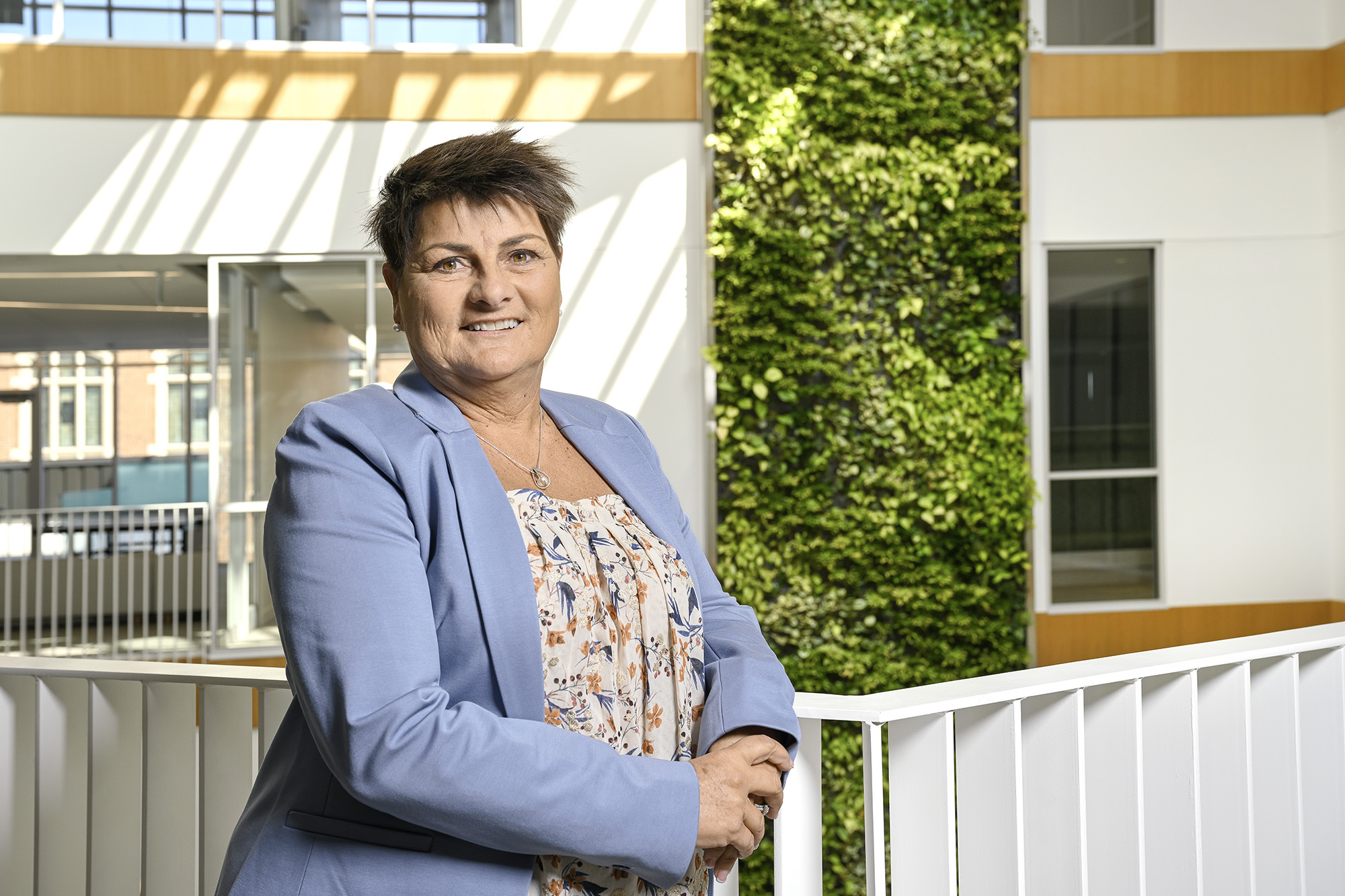
The birth of Cultivator
Launched in 2019, Cultivator is Canada’s first credit union-led tech incubator.
Those seeking help commercializing their tech innovations, known as founders in the Cultivator vernacular, can apply to be a part of Cultivator’s startup programming and receive access guidance from mentors around the world. Founders also have access to funding, resources and programming, as well as office space shared with like-minded enterprises.
“The time of seeing our talented entrepreneurs leave this province has ended."
“It goes back to our credit union roots of members helping members, along with the cooperative principle of concern for the greater economic community,” says Maggie Sinclair, chief growth officer at Conexus.
“The time of seeing our talented entrepreneurs leave this province has ended. We saw this great opportunity to be involved in something special. Here on the prairies, we have some of the most resilient people anywhere. By giving them access to the right support at the right time, we’re able to help them compete on a global stage.”
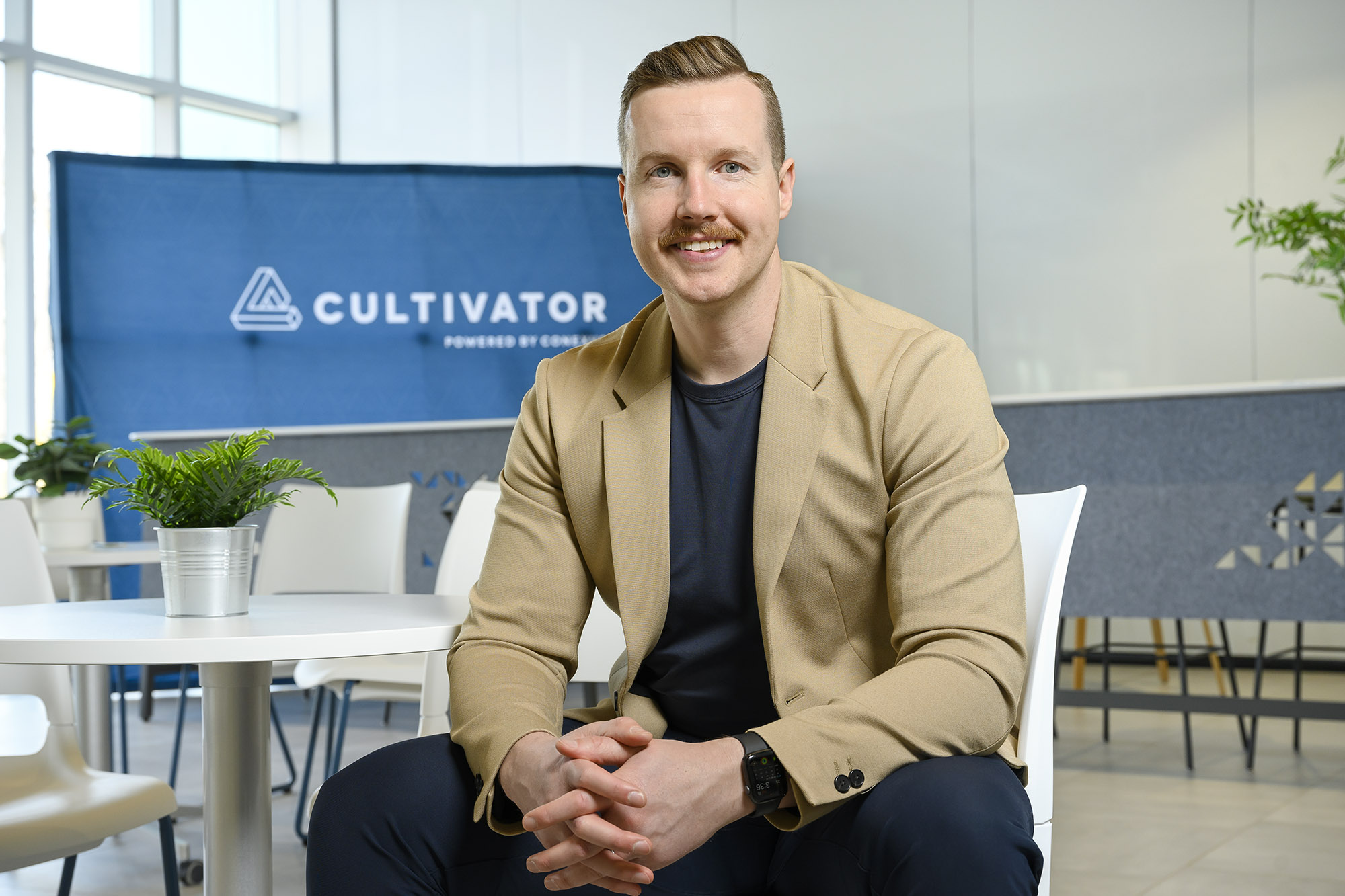
Cultivator’s impact on tech startups
Jordan McFarlen BEd’10 helps lead Cultivator’s operations as the tech incubator manager. He started with Conexus in early 2018 to help oversee the creation of the new tech hub.
Cultivator provides founders with the tools and resources they need to be successful. The stats speak for themselves.
“Cultivator began around the same time that the U of R was seeking revitalization funding for the College Avenue Campus Project. Conexus was selected as a community partner, and as part of its RFP proposal, it wanted to build an innovation hub to help support local startups,” says McFarlen.
After a year of planning, Cultivator launched in January of 2019 with 10 ambitious startups, initially working out of Innovation Place adjacent to the U of R campus until a new space on College Avenue was ready in 2021.
“Having a centralized location where founders can be mentored and tap into venture capital and other supports has really made a difference, accelerating their growth into global markets.”
Tech startups are often high risk – meaning there’s a high failure rate – but they also have high growth potential. Through programming and events, Cultivator provides founders with the tools and resources they need to be successful. The stats speak for themselves.
In the past four years, Cultivator has incubated over 115 companies through its four different programs, helping them navigate from the concept stage to some with $1-million plus annual revenues.
“We’re like a close-knit family,” he says. “I really have to thank Cultivator for helping me build those relationships and take my career to the next level.”
“Of the companies we’ve supported, they’ve been able to raise $59 million in private capital, get $42 million in public funding, and generate over $39 million in revenue,” McFarlen says proudly. “Additionally, these companies have created over 300 jobs. It’s exciting because we’re seeing people stay in Saskatchewan because of this support, and we’re also enabling others to stay and work here too.”
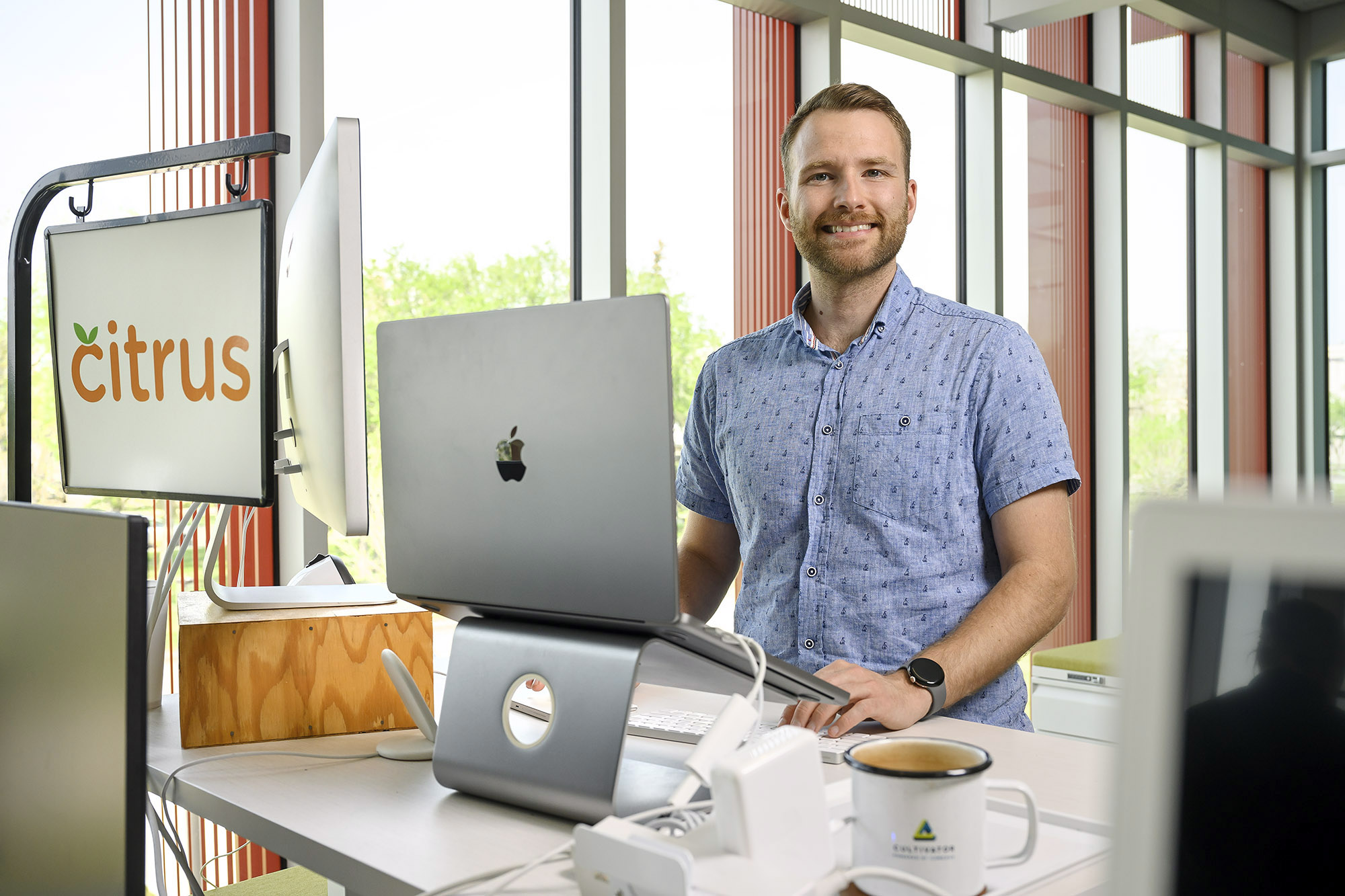
A case in point
“I grew up in Pilot Butte where everyone knows everyone and I really didn’t want to leave Saskatchewan,” says David Crossman BASc’15, co-founder and CTO of Citrus Technology, a platform that provides software management for youth sports, with innovative ways to communicate with parents and deal with the day-to-day administration.
For Crossman, who just turned 30, tech has advanced with lightning speed. “I grew up with cassette tapes and Sony Discmans, eventually sharing an MP3 with my sister,” he laughs. “I always thought I’d get into video design at the U of R, but wound up taking a software course and fell in love, even though I’d never written code before in my life.”
So Crossman – always the innovator – started a Slack group to connect and build a community of technical folks in Saskatchewan, eventually becoming HackRegina. “We were able to pull experts in from across the tech community, solving problems and sharing ideas. I could reach out and say: ‘Hey, this isn’t working for me. Have you come across this same issue?’ and dozens of tech experts could respond. We even brought in new immigrants and partnered with Regina Open Door Society.”
Crossman says that the same Saskatchewan mentality of stopping and helping a stranded motorist at the side of the road applies to the tech community. “We’re like a close-knit family,” he says. “I really have to thank Cultivator for helping me build those relationships and take my career to the next level.”
“My company is all about a social mission, first.”
Citrus is now helping over 40 youth sports organizations across Canada with the chance to break into the U.S. market. “It’s crazy how far we’ve come – all thanks to Cultivator.”
Supporting technology across all sectors
Cultivator supports companies ranging from health, sales, cleantech, agtech, and more. To support the emerging growth of agtech around the world, Cultivator teamed up with founding partners Emmertech (an Agtech-focused venture capital fund managed and operated by Conexus Venture Capital Inc.) and Economic Development Regina. Together, they launched AGTECH ACCELERATOR, a national 12-week, venture-backed program built with founders and farmers, combining agriculture and technology to help create more Ag startups.
“Each winter, Cultivator selects top early-stage companies from across Canada, United Kingdom, and Australia to participate in three months of intensive programming,” says McFarlen.
“This includes connecting with world-class mentors, Ag producers, and other investors, to optimize solutions for the agriculture industry,” he says. “They finish off the program by pitching their company on the main stage at Canada’s Farm Show in Regina.”
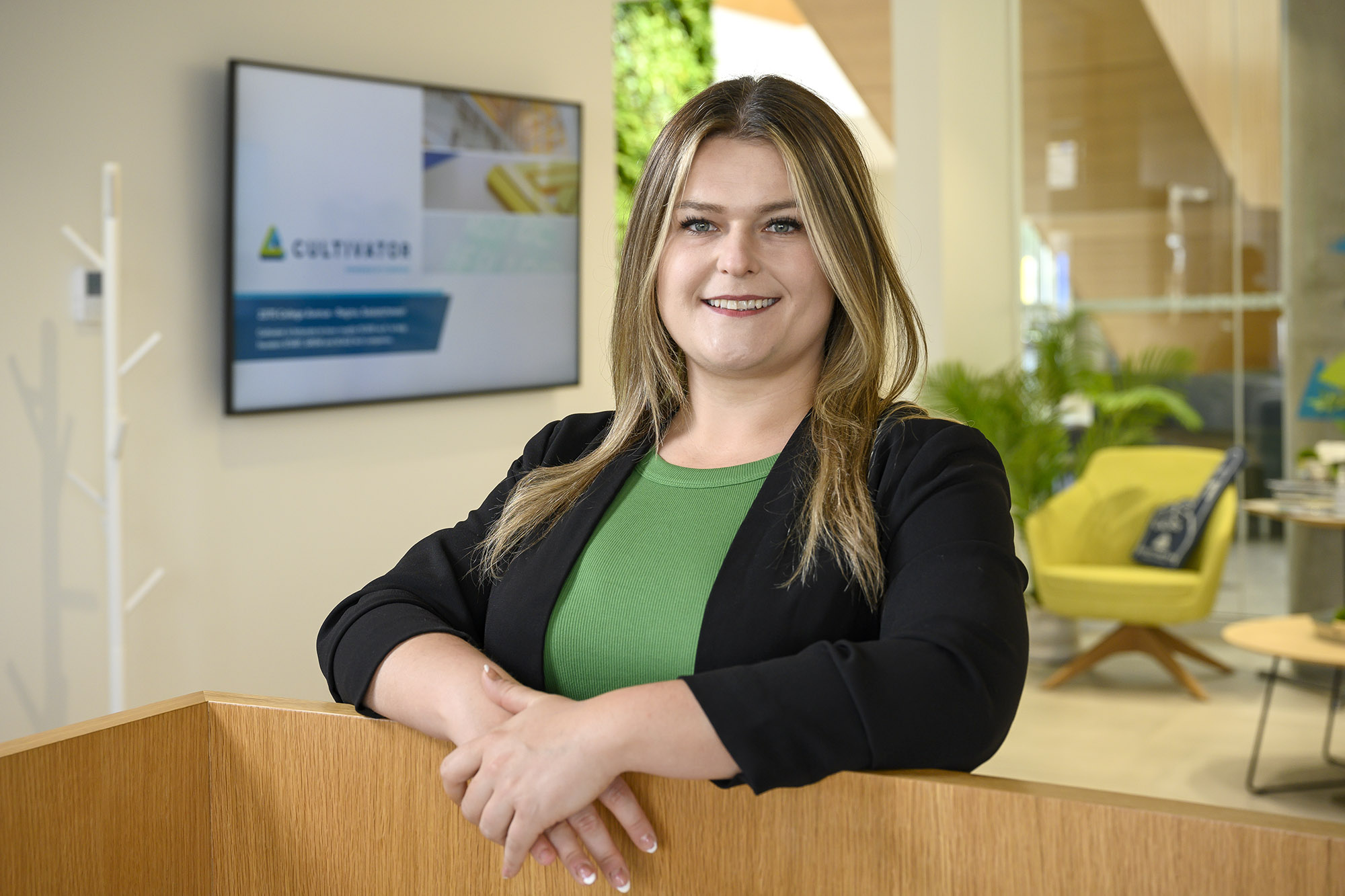
Tech with a social conscious
Founders in Cultivator attend numerous sessions with mentors as well as attend retreats. For anyone curious to see what the tech industry is all about, Cultivator also hosts several events throughout the year including its 24-Hour Startup.
Hannah Tait BAdmin’22 participated in the 2022 Agtech-themed 24-Hour Startup which took place at Canada’s Farm Show. Tait, whose company ProdYous, markets an app that connects urban producers of fruits and vegetables with urban consumers, won the competition.
“Helping solve food insecurity is really important to me,” she asserts. “Food prices are soaring, and in some neighbourhoods like North Central, they don’t even have a grocery store. It’s easier for someone to pick up a bag of chips at the convenience store than to buy fruits and vegetables to feed their family. I want to change that.
Tait is currently in discussions with a founding partner to build a new business that addresses food security issues in Regina. “If you have a garden and you grow five extra tomatoes – or 500 extra – I want to be able to connect you with people who need this produce within walking distance.”
The 27-year-old says her proposed new company is built on the concept of Varagesale, but with social awareness in mind. “I’m excited to build this community of people creating local food access and removing transportation barriers to grocery stores – especially amongst those who don’t drive or have cars,” she says.
While this new company is still in the development stages, she’s excited to see where it may lead.
Tait, whose university degree is in business, never dreamed she would wind up building tech start-ups. But she saw a need and forged ahead, even with difficult odds.
At the time of the interview, Tait was working on her new company evenings and weekends while still managing a day job at Ethical Digital, a Saskatoon-based company trying to change the trajectory of the internet. The company raises awareness and delivers strategies to clients to reduce mental health impacts of social media like insomnia, anxiety, and depression. She has now started working at Saskatchewan Trade and Export Partnership while continuing to explore the options for technology innovation to improve food security.
“It’s hard working full time and developing this food security initiative but it’s what I love and it’s important work,” she says. “It’s also important to show young people what’s possible when you work hard and set goals.”
Tait cites Cultivator and “incredible community” of Regina founders for believing in her and helping her realize her own tech dreams.
Good news for Saskatchewan
McFarlen feels the same about each and every founder he’s had the chance to work with at Cultivator. “We’re doing really innovative work and helping grow Saskatchewan communities, celebrating success in our own backyard.”
Sinclair agrees, “We’re so proud of what we’re doing with Cultivator. It really inspires you when you think about all the good that’s happening with tech here in Saskatchewan.”
For Crossman, Tait, and dozens of other founders, Saskatchewan is no longer a place to be from but a place to be – to thrive and build a future in tech.
“I’m always thinking about the future – what sort of world am I going to leave behind for my nephew. That motivates me to keep pushing forward,” says Tait, who dreams of creating the kind of environment where today’s youth never have to pack their bags and leave, and where Saskatchewan will always remain home.

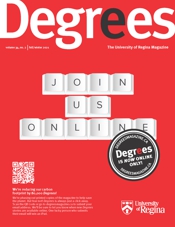

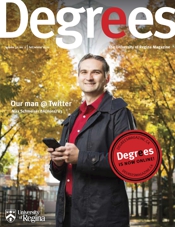


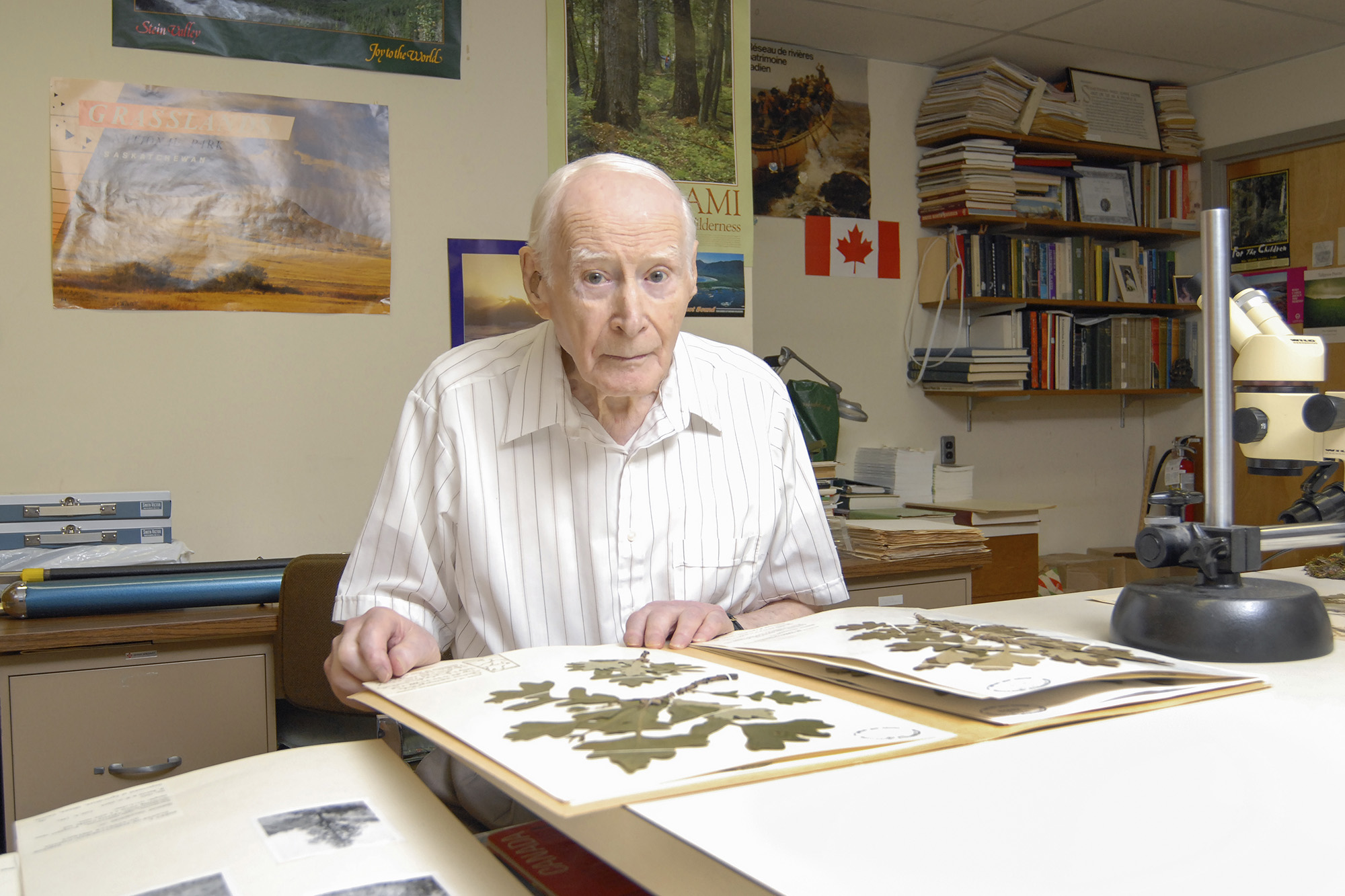 Former U of R biology professor George Ledingham.
Former U of R biology professor George Ledingham.
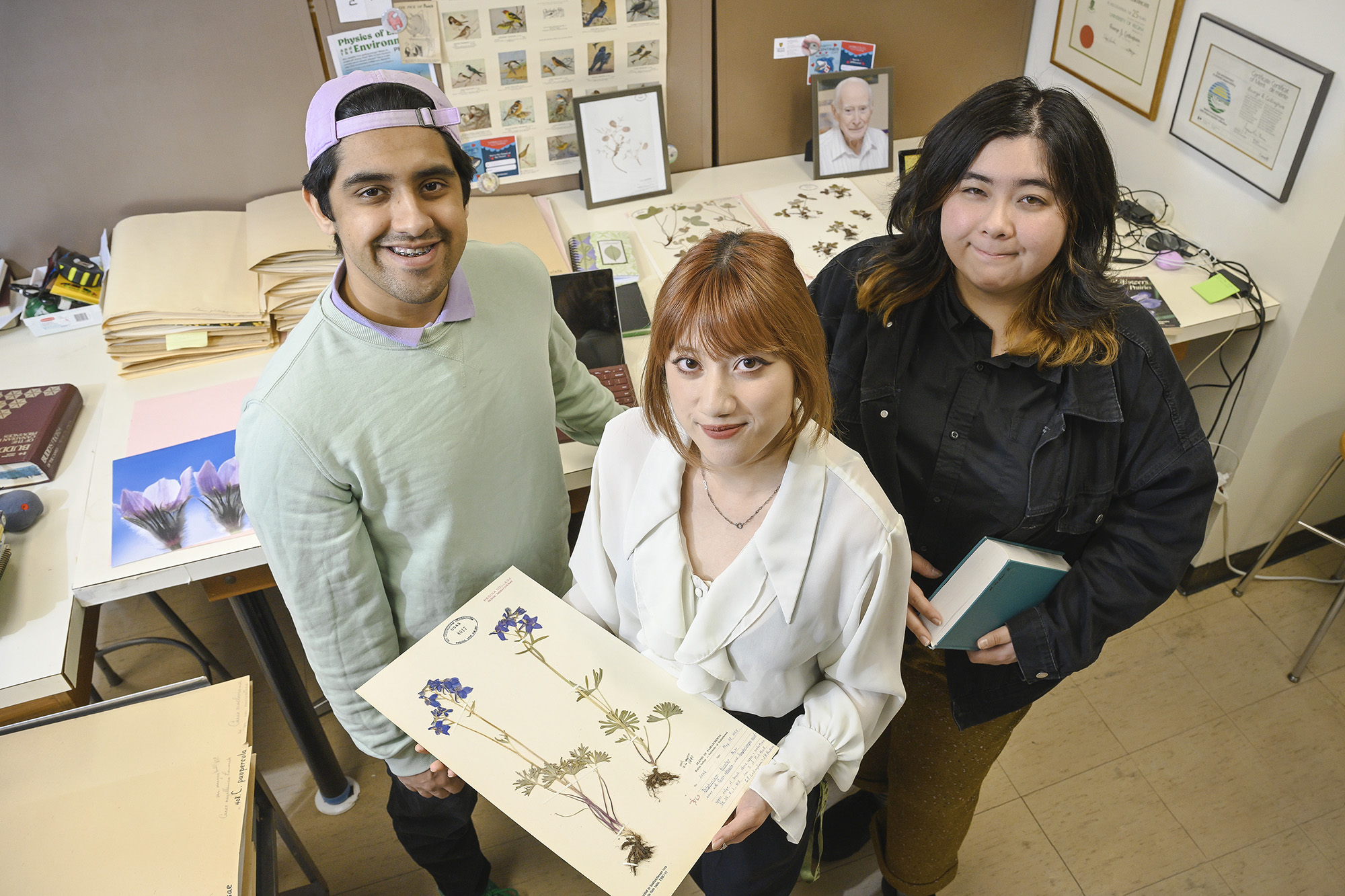 Helping with the digitalization project is (left to right) Bazil Rehman BSc '23, Ellaissa Andrade BSc '22, and Mariko Sawa BA'19.
Helping with the digitalization project is (left to right) Bazil Rehman BSc '23, Ellaissa Andrade BSc '22, and Mariko Sawa BA'19.
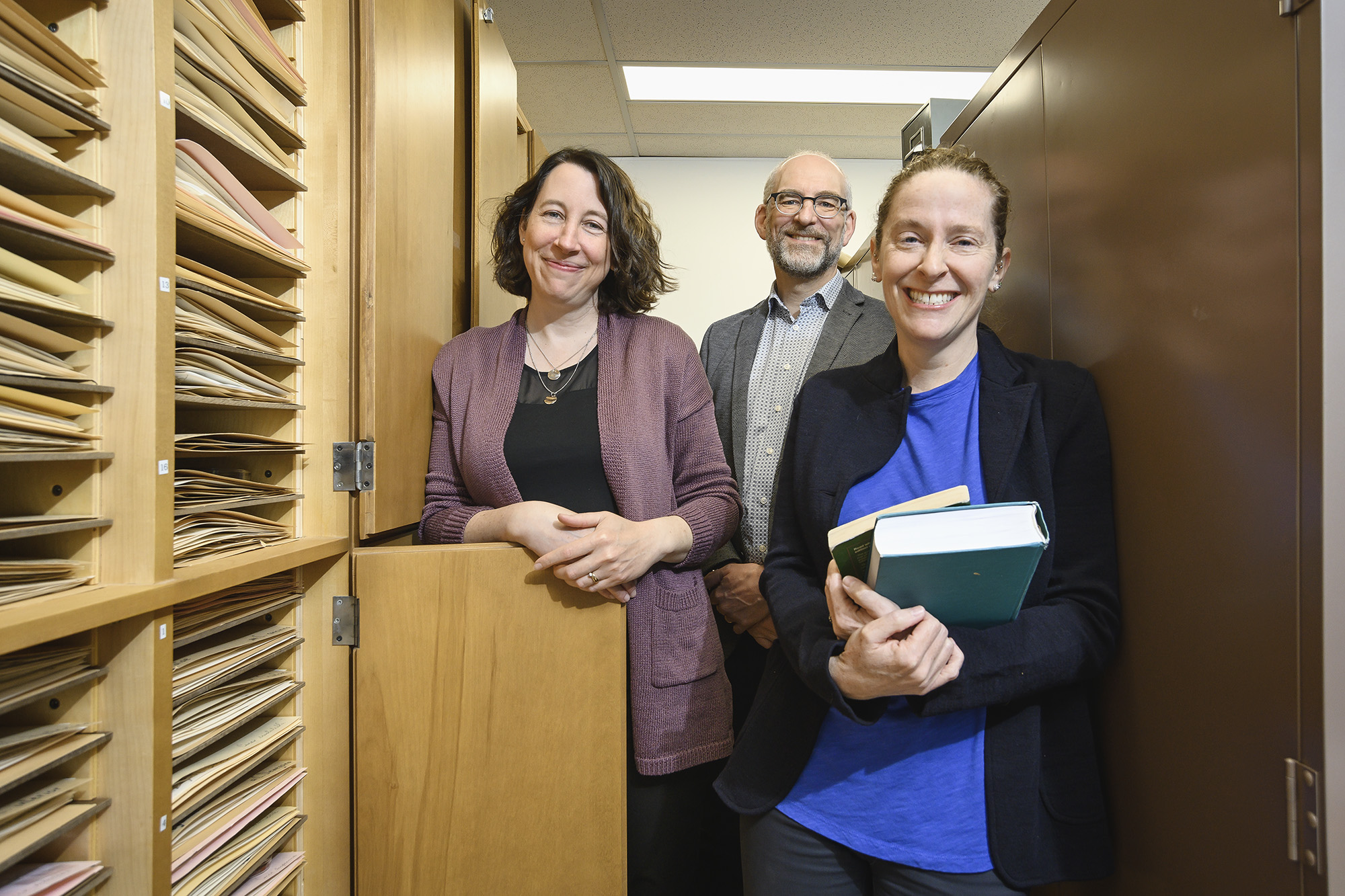 U of R faculty members behind the digitization of the Ledingham collection are (left to right) Crista Bradley, an archivist at the John Archer Library, Philip Charrier, associate professor of history, and Mel Hart, associate dean of Science: Student experience and engagement.
U of R faculty members behind the digitization of the Ledingham collection are (left to right) Crista Bradley, an archivist at the John Archer Library, Philip Charrier, associate professor of history, and Mel Hart, associate dean of Science: Student experience and engagement.
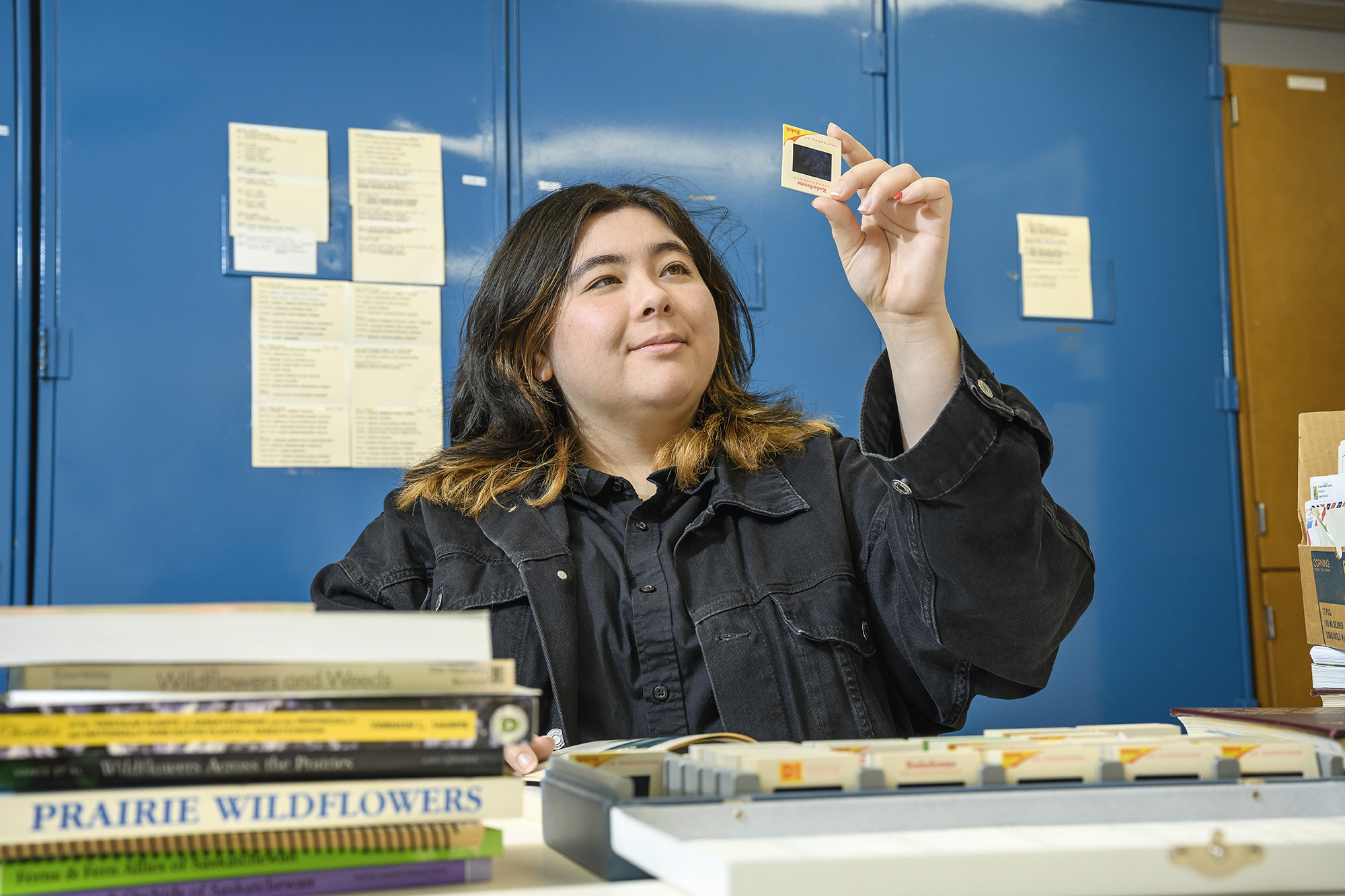 Part of what alumna Mariko Sawa BA'19, has been working on in the Ledingham Herbarium is putting together some of the plant samples for an art exhibit that will take place in the Fall.
Part of what alumna Mariko Sawa BA'19, has been working on in the Ledingham Herbarium is putting together some of the plant samples for an art exhibit that will take place in the Fall.
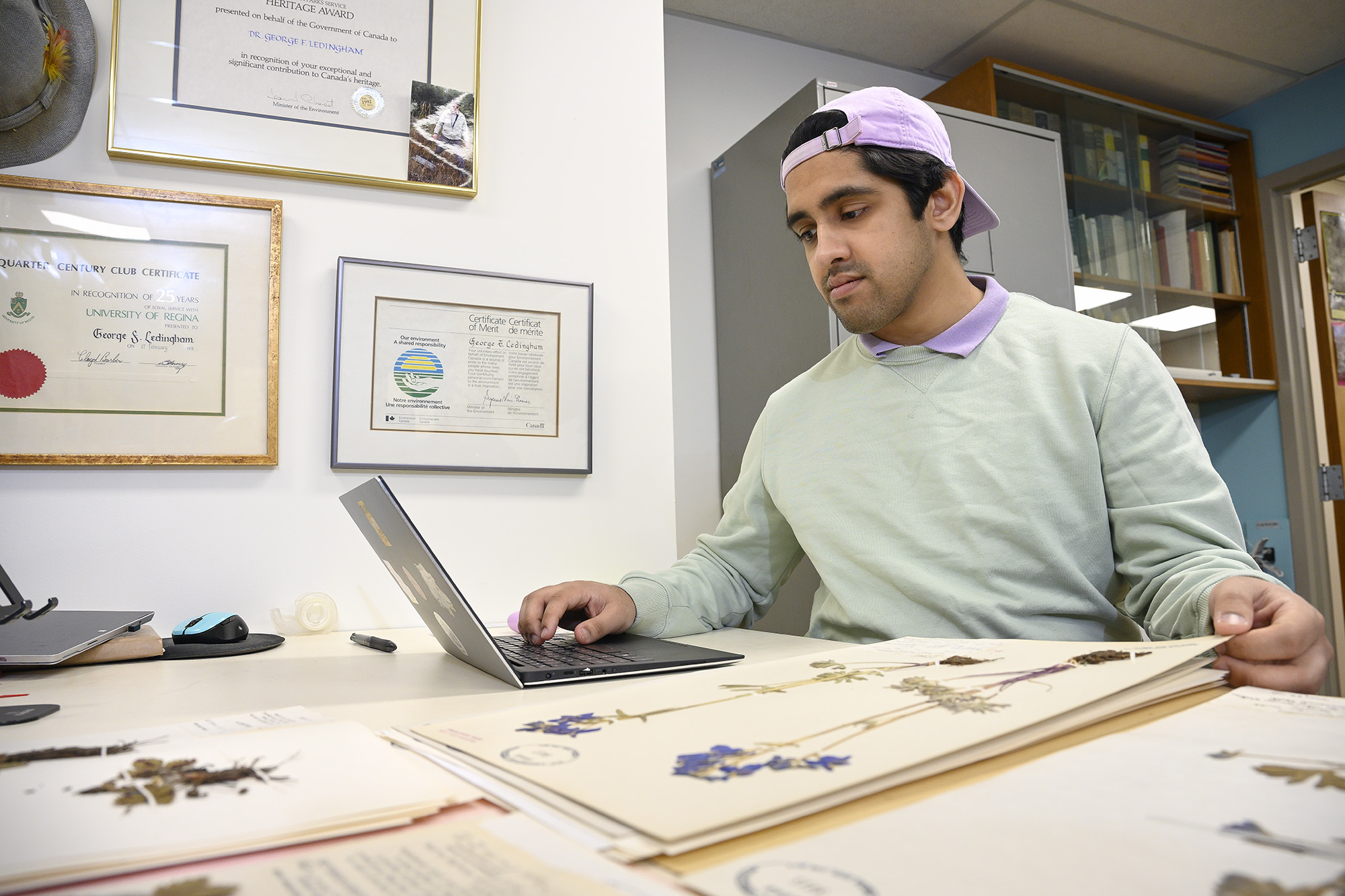 Bazil Rehman's BSc '23 time in the herbarium has turned the Faculty of Science graduate into an expert at finding the scientific names of plant samples.
Bazil Rehman's BSc '23 time in the herbarium has turned the Faculty of Science graduate into an expert at finding the scientific names of plant samples.
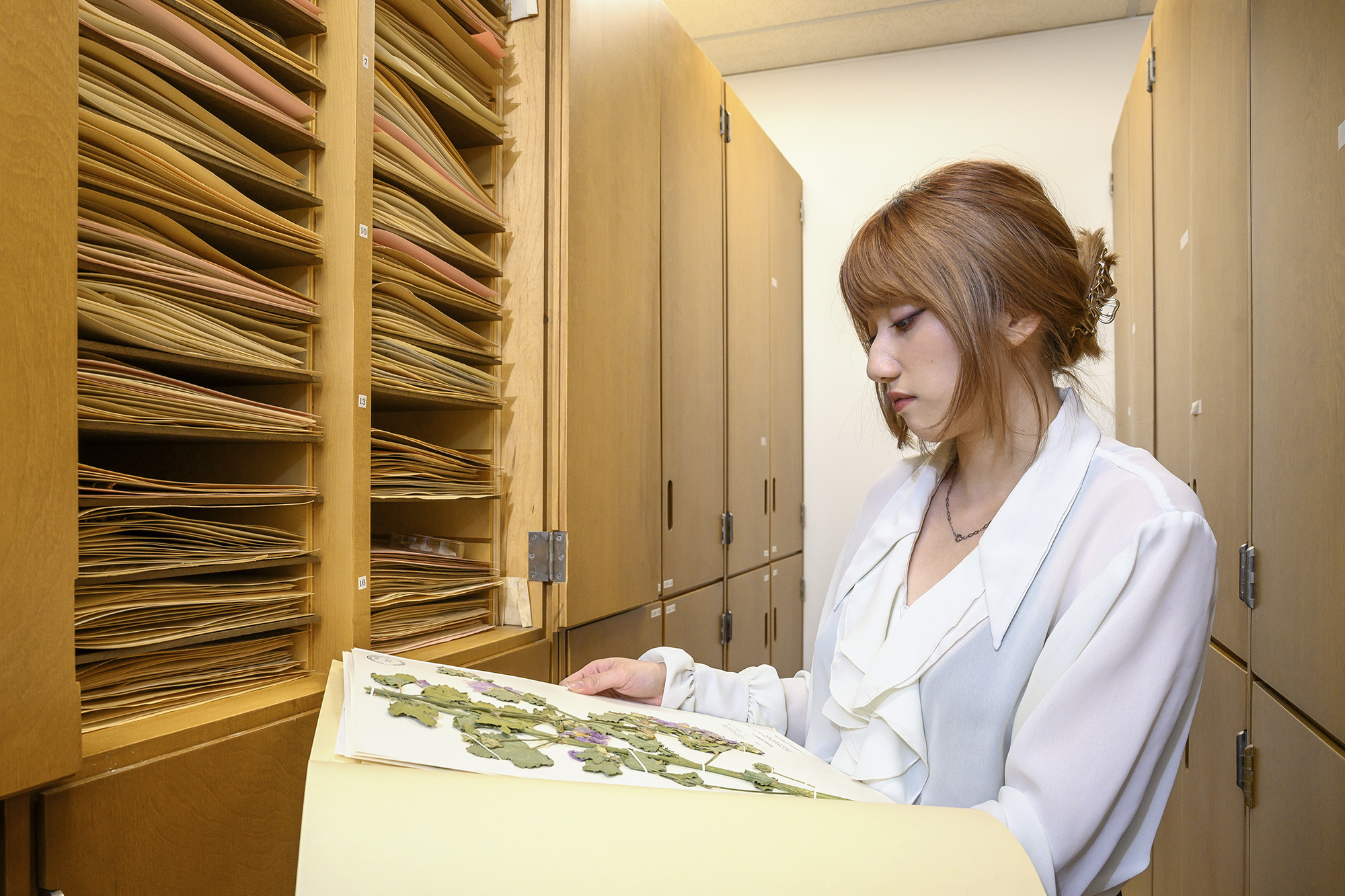 Ellaissa Andrade BSc '22 was one of the students tasked with transcribing the written information found on each of these labels into digital files.
Ellaissa Andrade BSc '22 was one of the students tasked with transcribing the written information found on each of these labels into digital files.
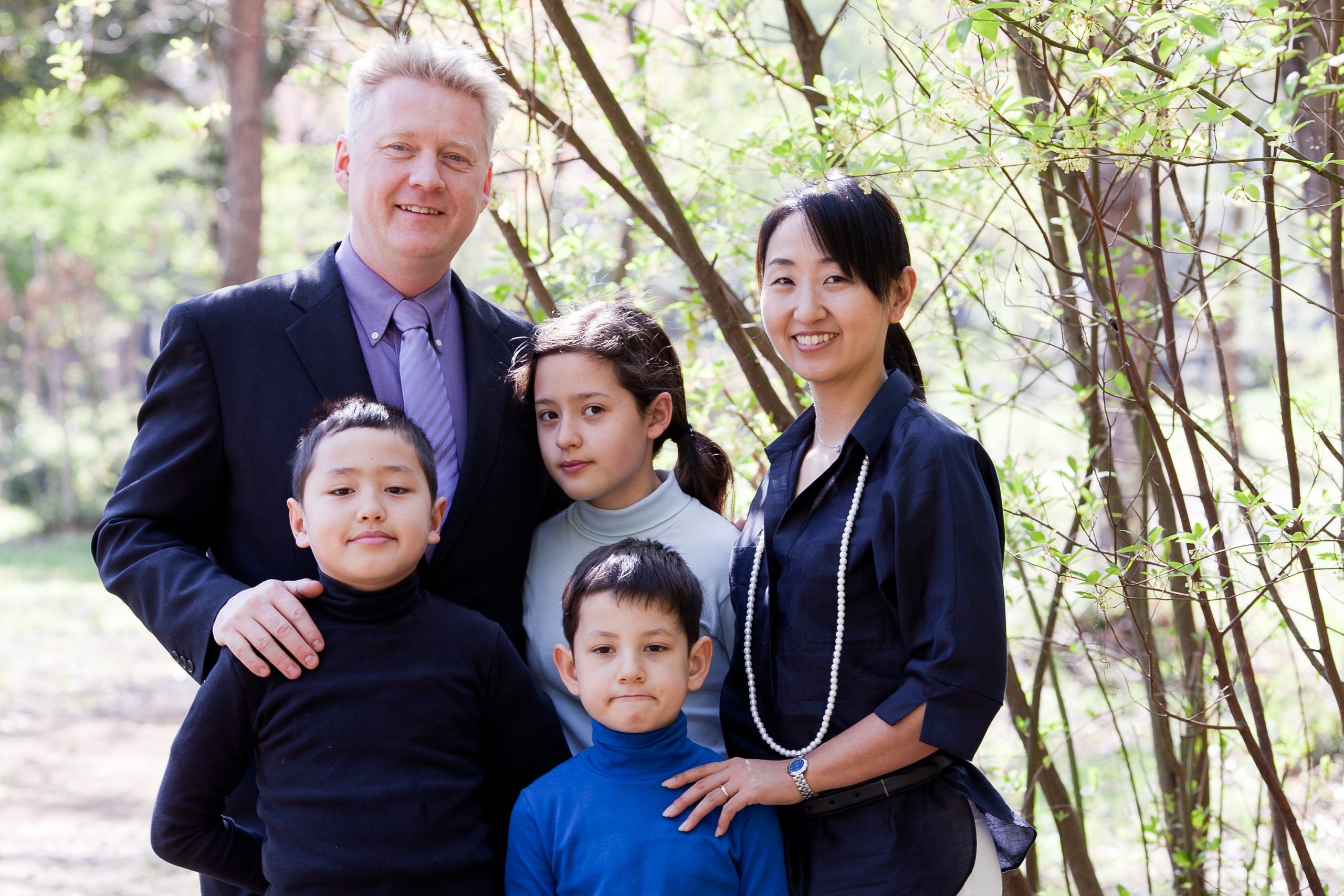 Hesse in an early family photo with the members of the Hesse clan. (Right to left) Hesse's wife Noriko, youngest son Naoriki, daughter Chisa, and, oldest son Takeru.
Hesse in an early family photo with the members of the Hesse clan. (Right to left) Hesse's wife Noriko, youngest son Naoriki, daughter Chisa, and, oldest son Takeru.
 The Hesse family takes a selfie while on vacation in Rome in front of the Trevi Fountain.
The Hesse family takes a selfie while on vacation in Rome in front of the Trevi Fountain.
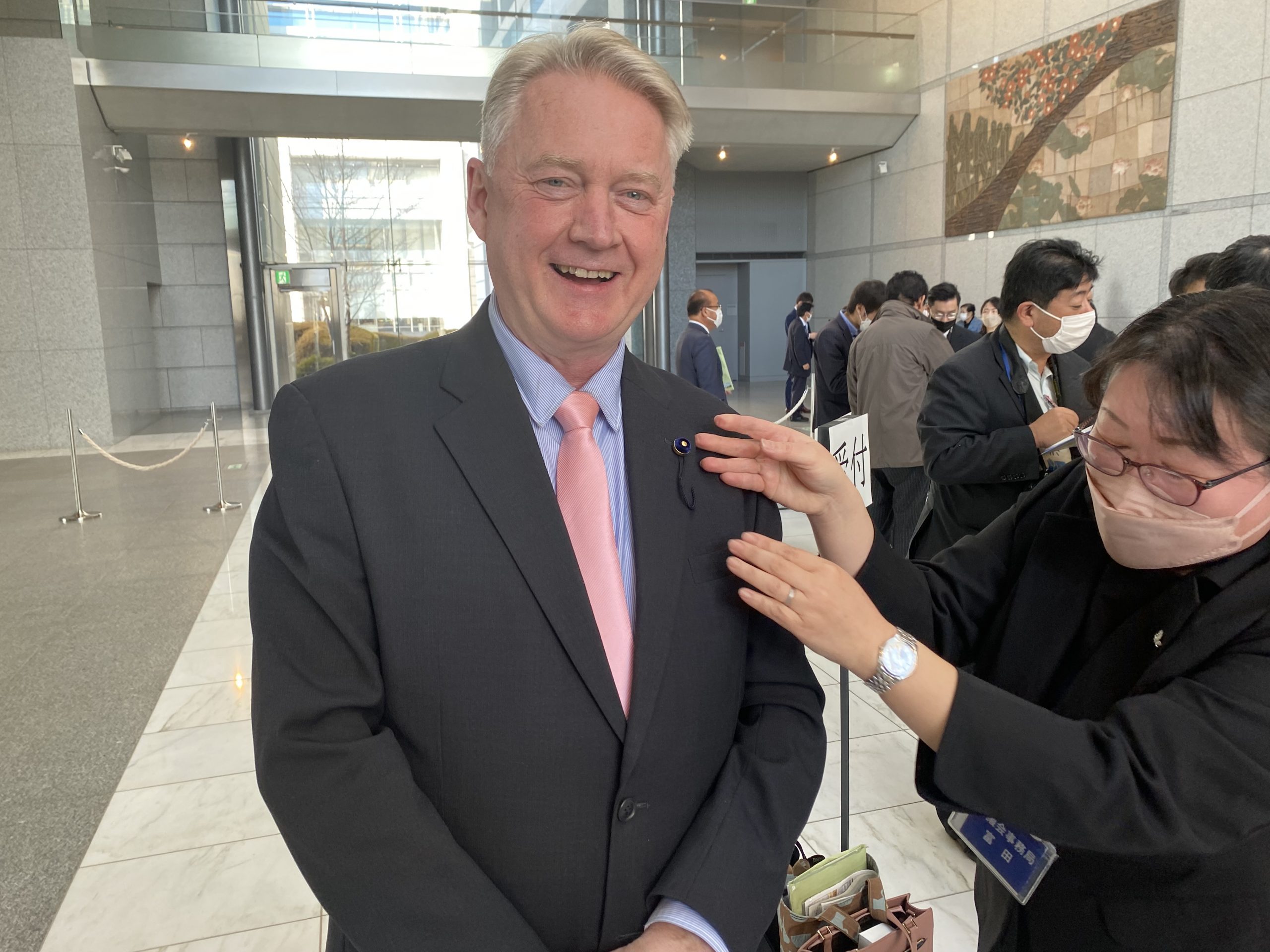 Early in his career, Hesse did some acting in Japanese TV shows and movies. He often played US presidents. Bill Clinton anyone?
Early in his career, Hesse did some acting in Japanese TV shows and movies. He often played US presidents. Bill Clinton anyone?
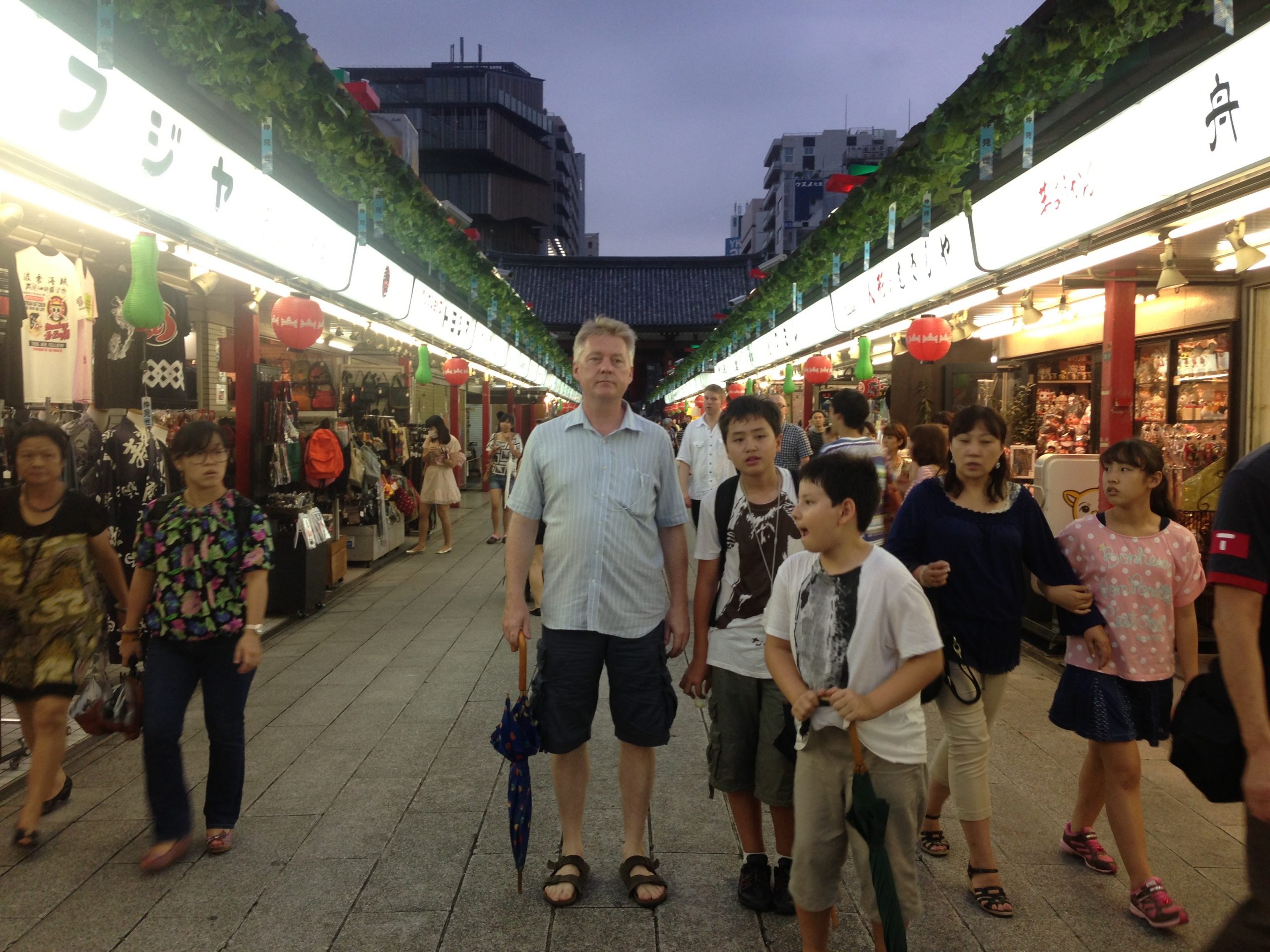 Hesse and his sons Takeru and Naoriki in a Tsukuba marketplace in Japan.
Hesse and his sons Takeru and Naoriki in a Tsukuba marketplace in Japan.
 Leslie Tkach-Kawasaki BA'87
Leslie Tkach-Kawasaki BA'87